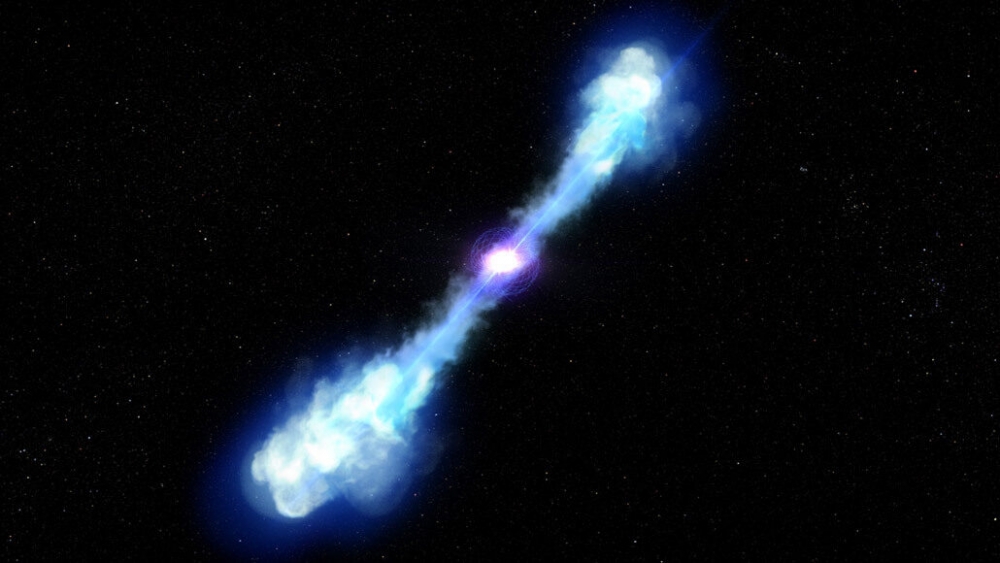Astronomers spotted colliding neutron stars that may have formed a magnetar

A burst of gamma-ray light in another galaxy (shown in an artist’s illustration) hints that colliding neutron stars produced a magnetar. NASA, ESA, D. PLAYER/STSCI
A recent stellar flash may have signaled the birth of a highly magnetic, spinning stellar corpse
By Lisa Grossman (ScienceNews)
DECEMBER 1, 2020
A surprisingly bright cosmic blast might have marked the birth of a magnetar. If so, it would be the first time that astronomers have witnessed the formation of this kind of rapidly spinning, extremely magnetized stellar corpse.
That dazzling flash of light was made when two neutron stars collided and merged into one massive object, astronomers report in an upcoming issue of the Astrophysical Journal. Though the especially bright light could mean that a magnetar was produced, other explanations are possible, the researchers say.
Astrophysicist Wen-fai Fong of Northwestern University in Evanston, Ill., and colleagues first spotted the site of the neutron star crash as a burst of gamma-ray light detected with NASA’s orbiting Neil Gehrels Swift Observatory on May 22. Follow-up observations in X-ray, visible and infrared wavelengths of light showed that the gamma rays were accompanied by a characteristic glow called a kilonova.
See full text